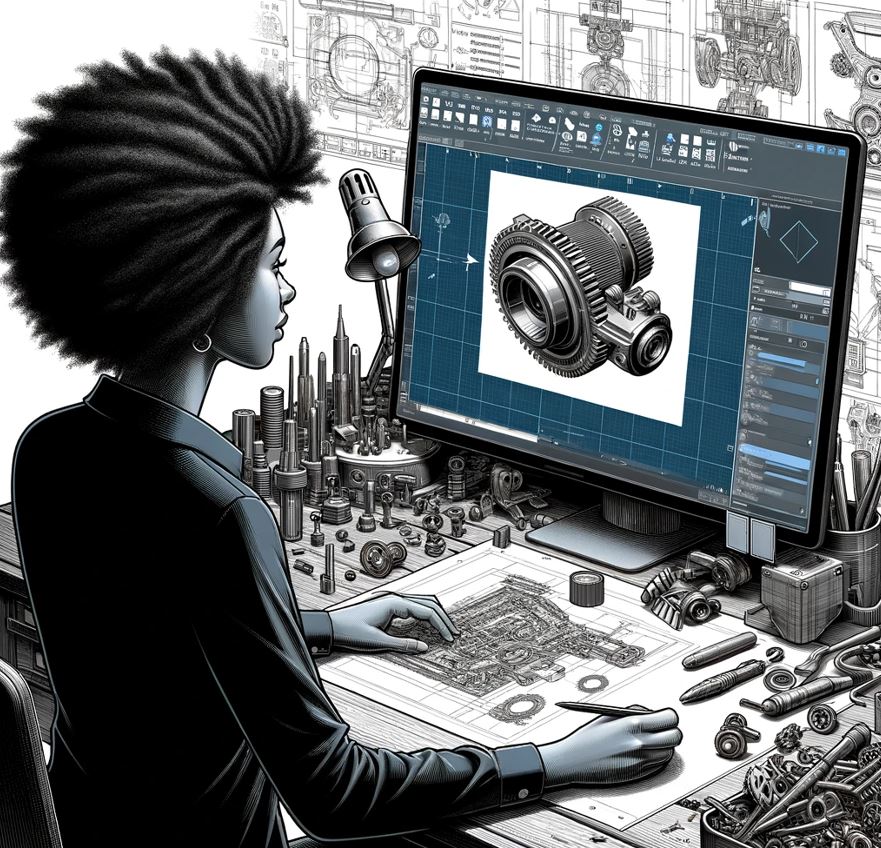
In the ever-evolving landscape of engineering and design software, AutoCAD has been a cornerstone in the world of computer-aided design (CAD) since the early 1980s. From its humble beginnings as one of the first CAD programs available on personal computers, AutoCAD quickly became the industry standard for 2D and 3D design. However, as competition emerged and technology advanced, many wondered what happened to AutoCAD. Has it been left behind? The truth is, AutoCAD has adapted and evolved to stay relevant. With the integration of new technologies, improved collaboration and integration capabilities, and a focus on 3D modeling and mobile accessibility, AutoCAD remains a powerful and versatile tool in the CAD arena, ensuring its enduring success in the field of design.
The Dawn of AutoCAD
AutoCAD entered the scene in 1982, revolutionizing the world of computer-aided design (CAD). Developed by John Walker and his team at Autodesk, AutoCAD was one of the first CAD programs available on personal computers. At a time when CAD systems were complex, expensive, and limited to mainframe computers or specialized machines, AutoCAD democratized CAD by making it accessible to a wider audience of professionals and hobbyists.
The Heyday: AutoCAD’s Reign
For many years, AutoCAD reigned supreme as the go-to solution for 2D and 3D design and drafting. Its ease of use and robust functionality made it the industry standard. Professionals in architecture, engineering, and construction heavily relied on AutoCAD for a wide range of projects. In fact, AutoCAD’s .dwg file format became synonymous with CAD drawings.
Facing Competition: The Rise of Rivals
As the new century approached, technological advancements and increased competition posed challenges to AutoCAD’s dominance. Newer CAD solutions started to emerge, offering specialized features and innovations that challenged AutoCAD’s position. Programs like Revit, SketchUp, and SolidWorks carved out their niches, catering to specific needs in 3D modeling, BIM (Building Information Modeling), and mechanical design, respectively.
AutoCAD Today: Adaptation and Evolution
Contrary to what some may believe, AutoCAD has not been left behind in the ever-evolving CAD landscape. Instead, it has embraced new technologies and continually evolved to stay relevant. Recent versions of AutoCAD have integrated cloud computing, mobile technology, and AI-driven tools, ensuring that it remains a powerful and versatile tool in a rapidly changing digital era.
Collaboration and Integration
One of the significant shifts in AutoCAD’s strategy has been its focus on better collaboration and integration. With the rise of BIM and the increasing importance of collaborative workflows, AutoCAD has enhanced its compatibility with other Autodesk products like Revit and Fusion 360. This integration facilitates a more seamless workflow across different stages of design and construction, allowing professionals to work together more efficiently.
Embracing the Third Dimension
While AutoCAD was primarily known for its 2D drafting capabilities, it has made significant advancements in its 3D modeling tools. It now offers more sophisticated 3D modeling and visualization options, putting it on par with other 3D-focused software. This shift acknowledges the industry’s growing preference for 3D design in many fields and ensures that AutoCAD remains competitive.
The Cloud and Mobile Era
Recognizing the importance of accessibility and flexibility, AutoCAD has expanded into the cloud and mobile platforms. AutoCAD Mobile and AutoCAD Web allow users to access, create, edit, and share CAD drawings from anywhere, at any time. This mobility is a game-changer for professionals who need to work on-the-go or collaborate remotely, further enhancing the usability of AutoCAD.
The Verdict
In summary, AutoCAD has adapted, evolved, and reinvented itself to remain a powerful and versatile tool in the CAD industry. While it may no longer be the only player in the field, its continued updates, integration capabilities, and move towards cloud and mobile platforms demonstrate its commitment to staying at the forefront of CAD technology. AutoCAD is still regarded as a reliable, efficient, and advanced tool capable of handling a wide array of design and drafting tasks.
Looking Ahead
The future of AutoCAD looks bright as it continues to balance its legacy features with new, innovative tools. AutoCAD remains a trusted option for professionals and enthusiasts alike, as it offers reliability, efficiency, and advanced capabilities. With its enduring commitment to adaptability and technological advancements, AutoCAD is well-positioned to maintain its relevance in the CAD industry. The journey of AutoCAD reflects a broader narrative in technology: adaptability is key to enduring success.

